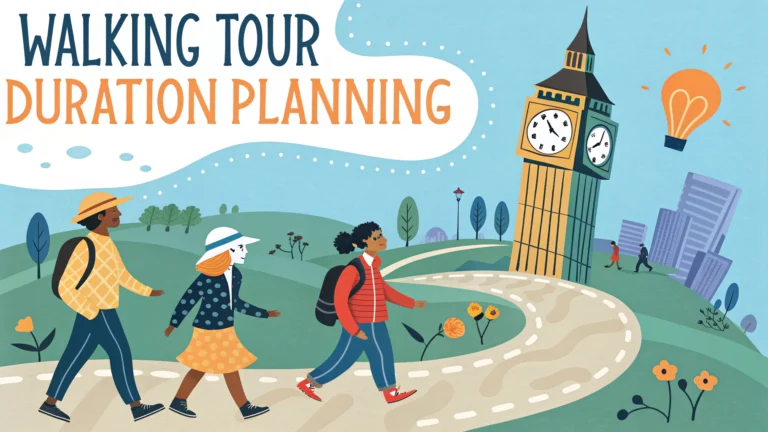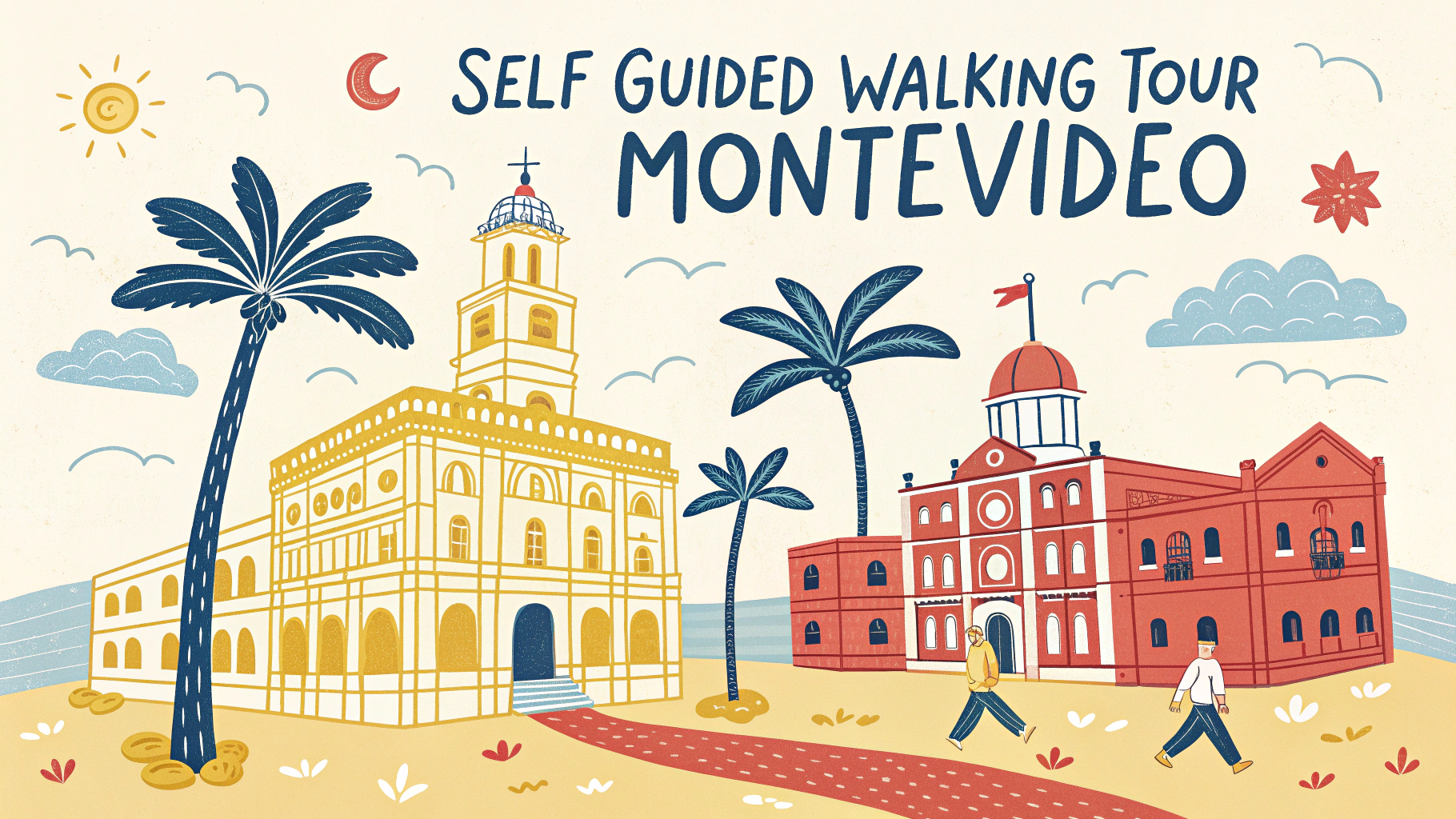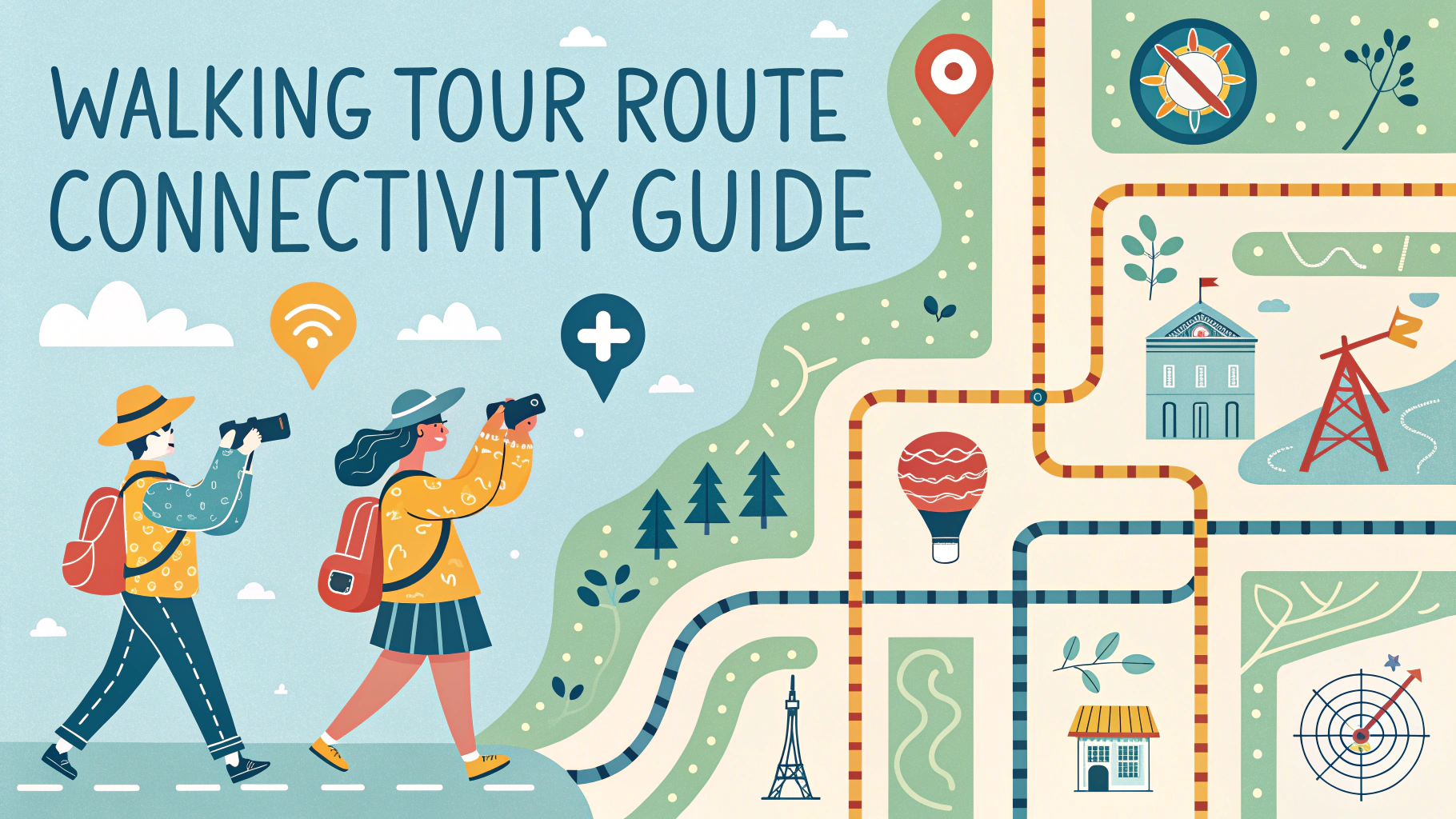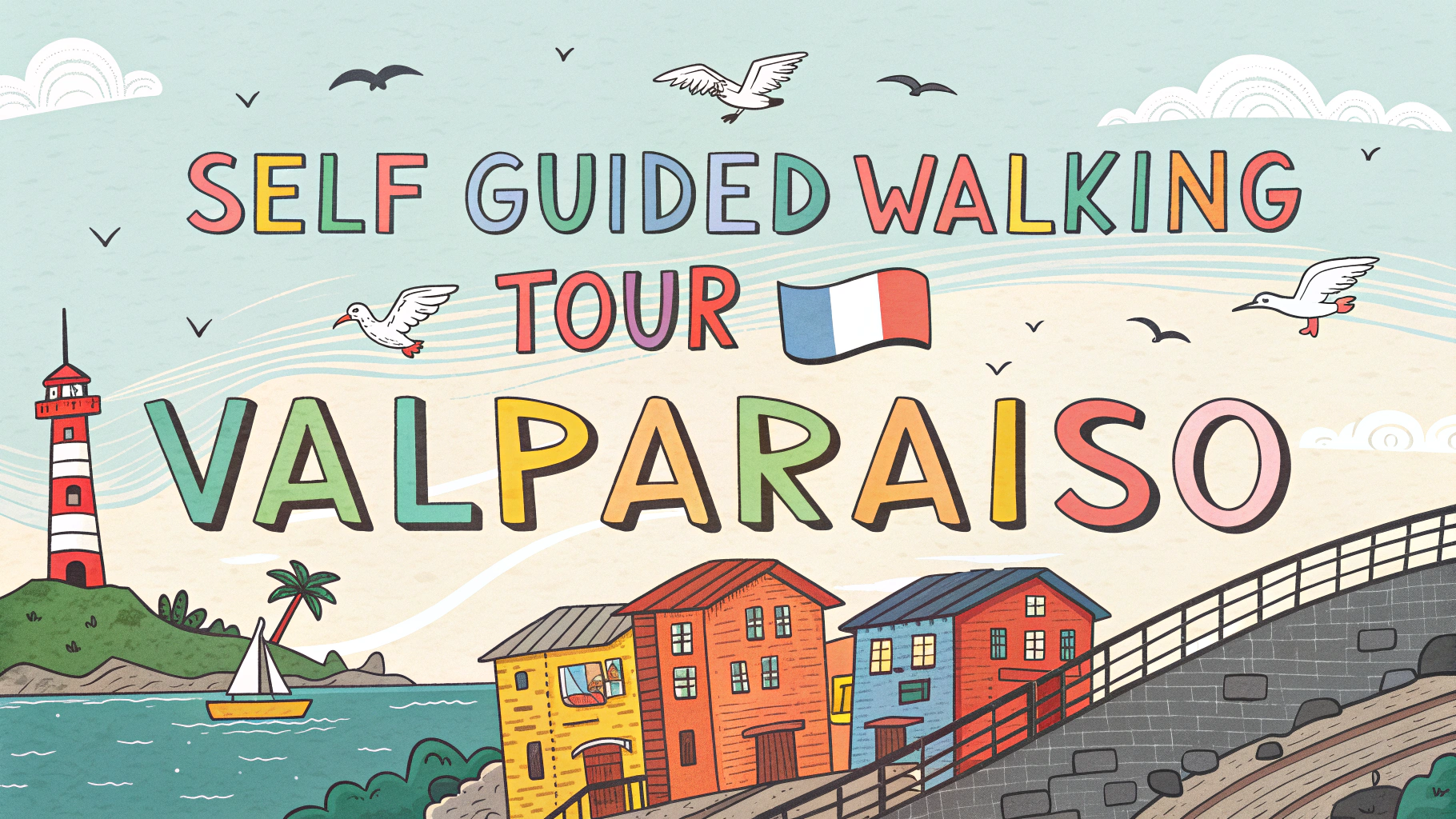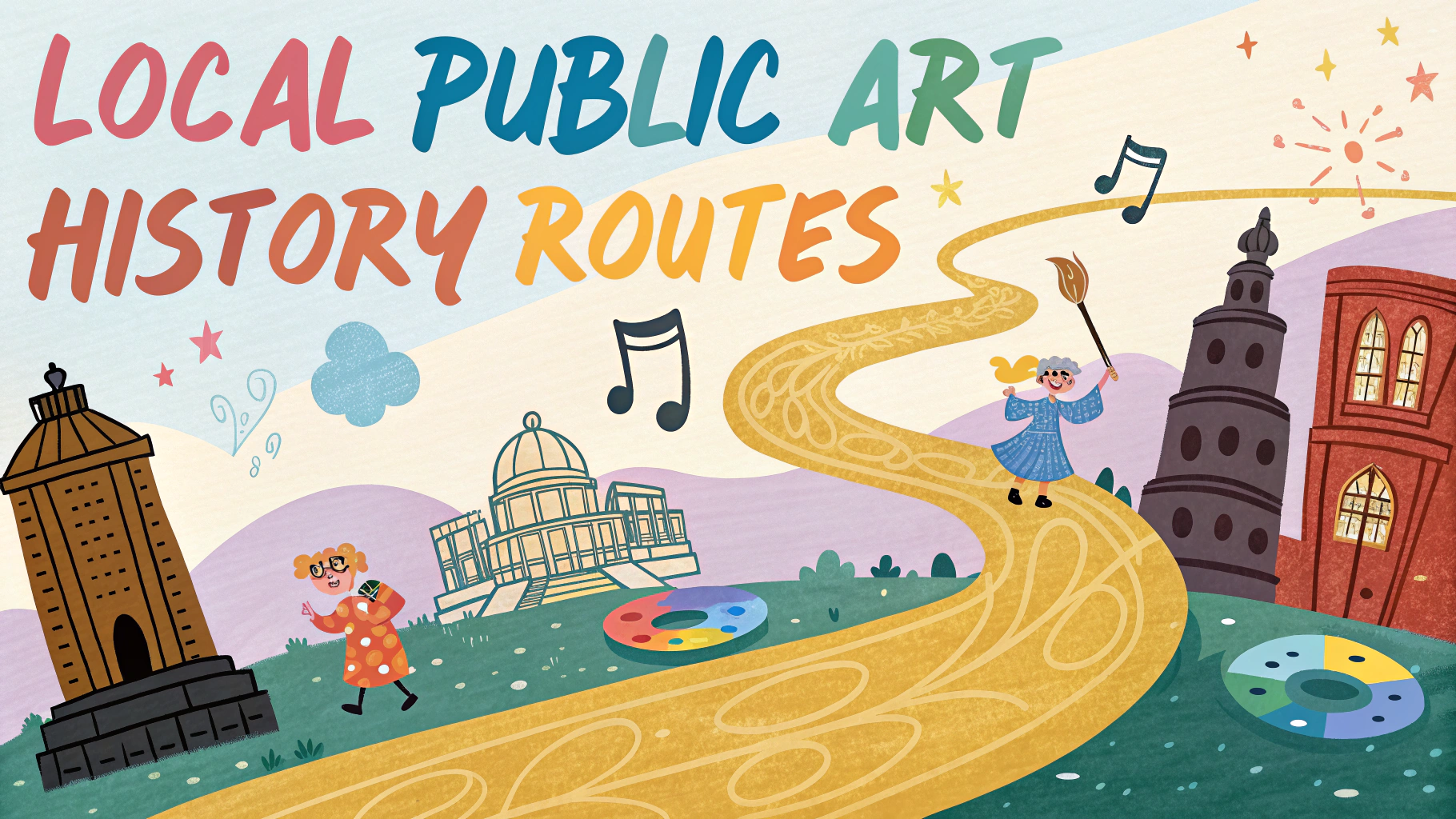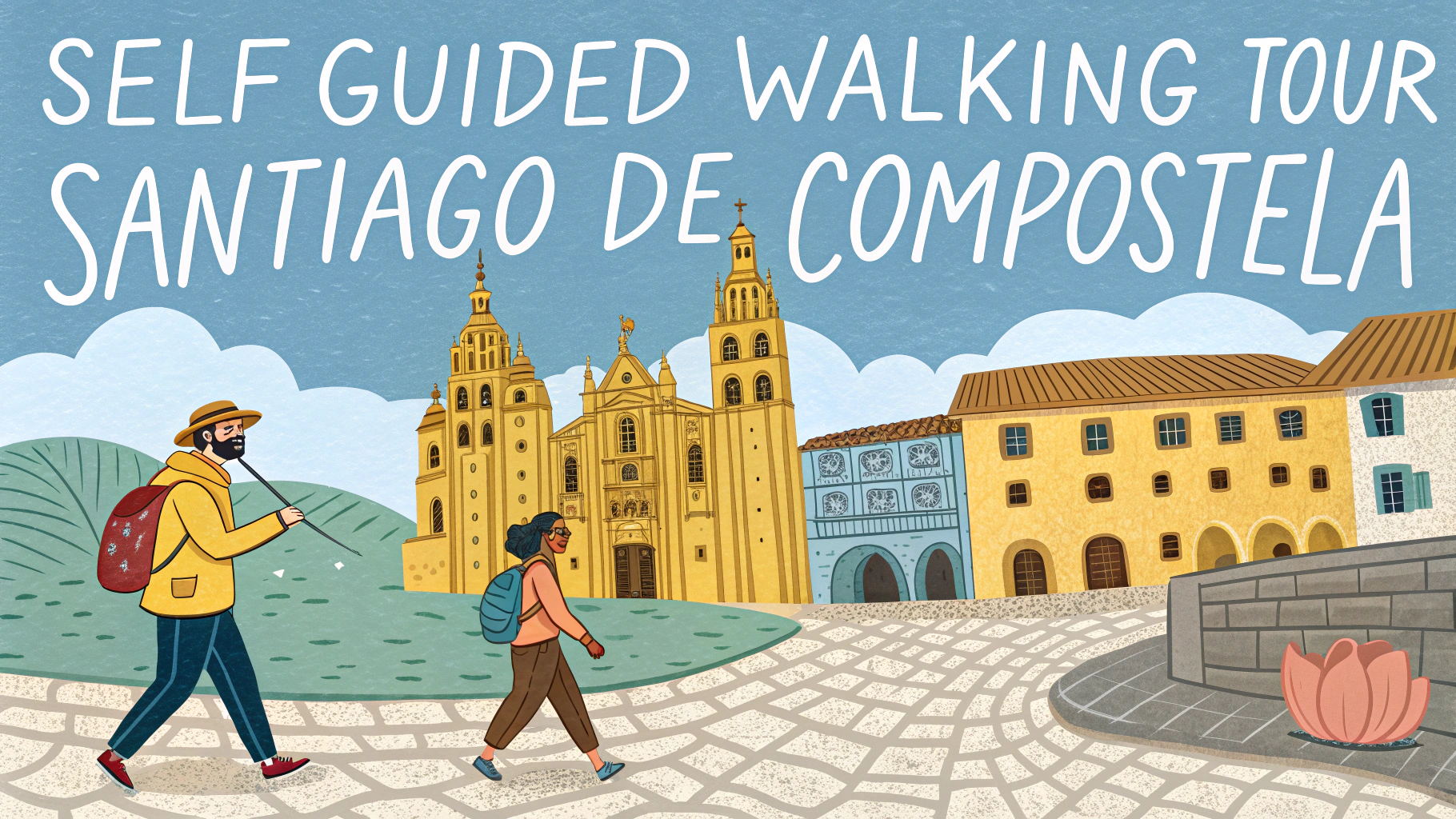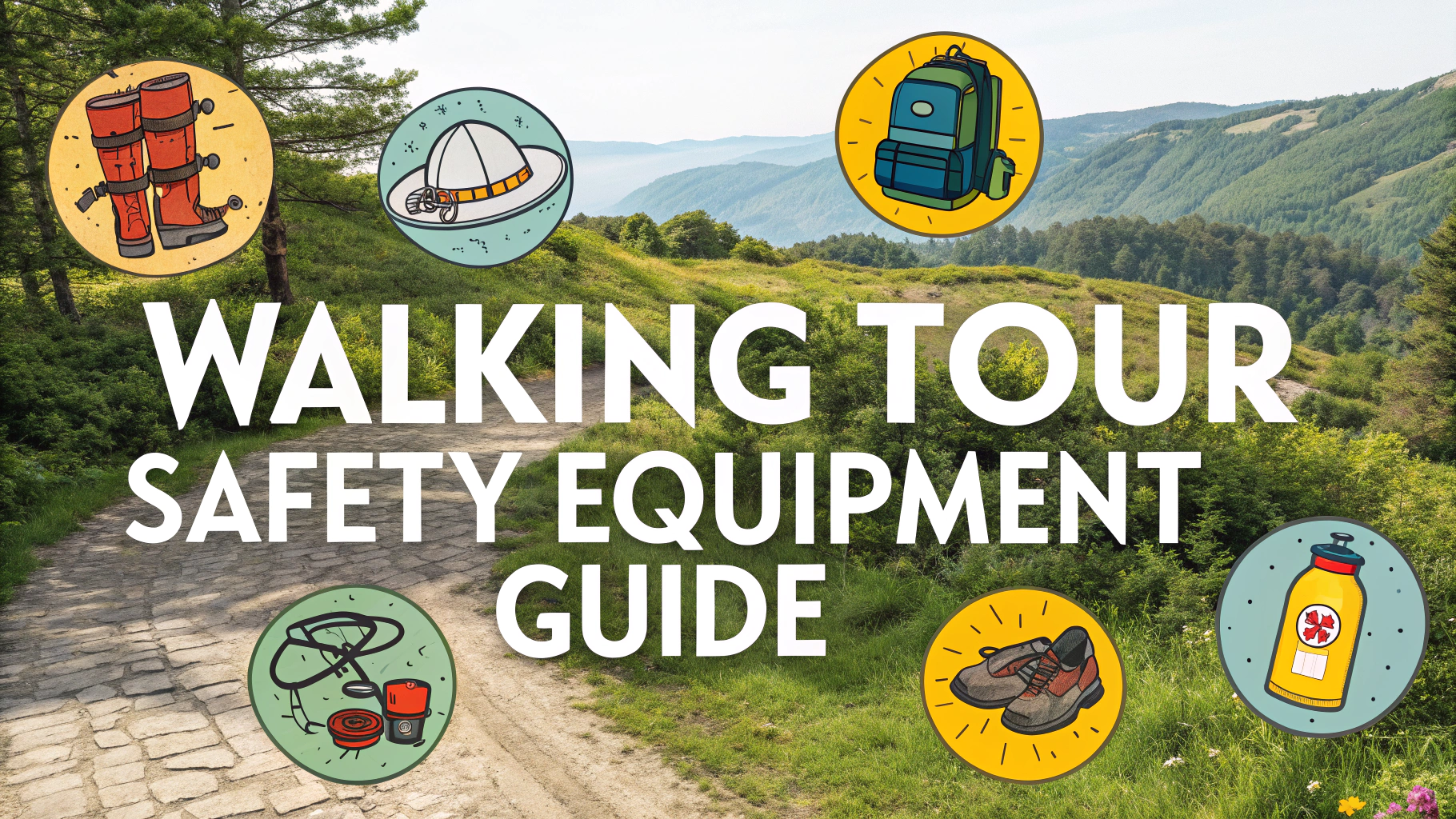Planning the right duration for your self-guided walking tour can make or break your travel experience.
Quick Tips for Tour Duration Planning
- Average walking speed: 2.5-3 miles per hour on flat terrain
- Add 30 minutes for each major attraction stop
- Factor in 15-minute breaks every hour
- Consider local weather patterns
Distance Calculator
| Tour Length | Walking Time | With Stops |
|---|---|---|
| 2 miles | 40-50 min | 2 hours |
| 3 miles | 1 hour | 3 hours |
| 5 miles | 1.75 hours | 4.5 hours |
Factors That Affect Tour Duration
- Terrain: Hills and stairs slow pace by 30-50%
- Group Size: Add 15 minutes per hour for each additional person
- Photo Stops: Include 5 minutes per scenic viewpoint
- Crowded Areas: Add 25% more time in tourist hotspots
Time-Saving Tips
- Download offline maps before starting
- Plan bathroom breaks near cafes or museums
- Book skip-the-line tickets for major attractions
- Start early to avoid crowds and heat
Recommended Tour Durations by Type
- Historical District Tours: 2-3 hours
- Food Tours: 3-4 hours with tasting stops
- Street Art Tours: 1.5-2 hours
- Nature Trails: 2-5 hours depending on difficulty
A self-guided walking tour app like GPSmyCity can help track your progress and manage time better.
Weather Considerations
- Hot Weather: Plan shorter routes, start before 10 AM
- Rain: Include indoor alternatives every 15-20 minutes
- Winter: Reduce planned distance by 20% due to slower pace
Keep emergency transport options handy – download local ride-sharing apps or save taxi numbers.
Essential Items for Time Management
- Comfortable walking shoes
- Water bottle (1 liter per 2 hours)
- Portable phone charger
- Small snacks for energy
- Local map (physical or digital)
Remember to adjust your planned duration based on real-time conditions and group energy levels.
Advanced Planning Strategies
Seasonal Adjustments
- Summer: Add 20% buffer time for heat breaks
- Spring/Fall: Ideal timing for standard duration
- Winter: Plan shorter daylight hours, indoor alternatives
Special Circumstances
- Families with Children: Double regular break times
- Senior Groups: Reduce walking segments by 40%
- Photography Focus: Add 1 hour per mile for detailed shots
Tech Tools for Better Timing
- Step counting apps for pace monitoring
- Weather radar apps for real-time updates
- Audio guide synchronization tools
- Route tracking applications
Conclusion
Successful self-guided walking tours require careful time planning, considering factors like terrain, group dynamics, and weather conditions. The key is maintaining flexibility while having a structured timeline. Regular assessment of group energy and progress helps adjust the pace accordingly.
Create a balanced itinerary that includes:
- Buffer time for unexpected delays
- Strategic rest stops
- Alternative routes for various conditions
- Emergency exit points
With proper planning and these guidelines, your self-guided walking tour can be both enjoyable and time-efficient.
FAQs
- How long does a typical self-guided walking tour take to complete?
A typical self-guided walking tour takes between 1-3 hours to complete, depending on the route length, number of stops, and your personal pace. - What factors should I consider when planning the duration of my walking tour?
Consider walking speed, terrain difficulty, weather conditions, number of photo stops, rest breaks, time spent at attractions, and your physical fitness level. - What is the recommended average walking distance for a self-guided tour?
The ideal distance for a self-guided walking tour is between 2-5 miles (3-8 kilometers), which allows for a comprehensive experience without excessive fatigue. - How can I estimate the total time needed for my walking tour?
Calculate approximately 20 minutes per mile of walking, plus 10-15 minutes per point of interest, and add 15-30 minutes for rest breaks and photo opportunities. - Should I plan different durations for urban versus rural walking tours?
Yes, urban tours typically take longer due to traffic lights, crowds, and more frequent stops, while rural tours can maintain a steadier pace but may have challenging terrain. - What’s the best time to start a self-guided walking tour?
Start in the morning between 9-10 AM to avoid peak heat, crowds, and have sufficient daylight to complete the tour without rushing. - How much buffer time should I add to my walking tour schedule?
Add 25-30% buffer time to your estimated duration to account for unexpected delays, interesting discoveries, or necessary breaks. - What’s the optimal number of stops for a self-guided walking tour?
Include 6-12 stops for a well-balanced tour, as more stops can lead to fatigue and time management issues, while fewer may not provide enough points of interest. - How often should I schedule rest breaks during a walking tour?
Plan a 5-10 minute break every 45-60 minutes of walking, with longer breaks of 15-20 minutes if the tour exceeds 2 hours. - What walking speed should I use to calculate tour duration?
Use an average walking speed of 2.5-3 mph (4-5 km/h) for urban areas and 2-2.5 mph (3-4 km/h) for areas with stairs, hills, or uneven terrain.
